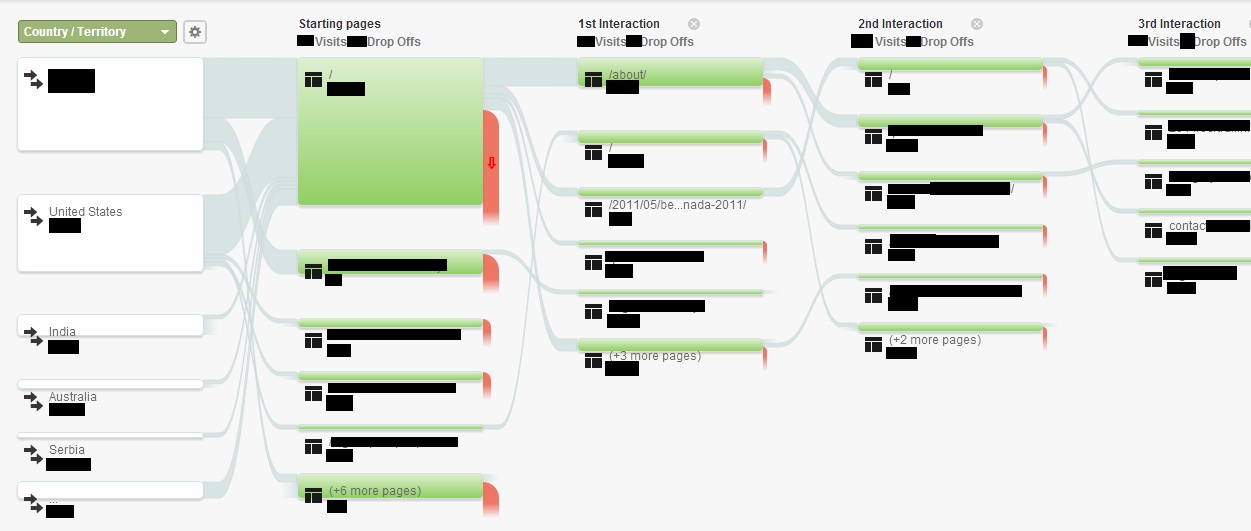Wake up, You’re in the Social SEO Copywriting Business!
 If you remember the good ole’ SEO copywriting days of yon, you may recall a tool that was all the rage for a couple of years called the Keyword Density Counter.
If you remember the good ole’ SEO copywriting days of yon, you may recall a tool that was all the rage for a couple of years called the Keyword Density Counter.
It was a dark time in SEO, when we could rank for just about anything simply by inserting our keywords of choice in the title, description and a few times throughout the copy.
The more you could squish in there, the better! Keyword counters were everywhere online; all you had to do was drop in your text to see whether you hit that magical 5 to 7% goal your client had requested.
I still see people ask for a specific keyword density but now, it makes my brain hurt.
Tactics like keyword density just don’t work anymore, but that’s old news. Optimizing content for search engines requires more finesse and now, optimizing for human readers is critical. There are literally hundreds of factors affecting your content’s search ranking, not the least of which are trust, authority, and engagement.
Social media is hands down the best content promotion tool out there. Though many will argue social activity won’t directly affect the way search engines rank content, getting eyes on your content (and enticing them to stay there) means page views, social shares, lower bounce rates and hopefully conversions.
Audiences have matured and we’ve had to take another step back and learn to factor social sharing in earlier in the game. It’s not enough to say what you want to say and hope for the best; a holistic online marketing strategy requires that social promotion is baked into your content right from the planning phase.
Plan for Social Promotion
Ideally, you’re no longer planning content based on what it is you want people to hear about your company. When the purpose of your blog posts, press releases, website copy or other content is to attract people to your business and convert them to customers, your content needs to offer them some value, by way of informing, convincing, or entertaining.
Using the data available to you, choose topics and angles based on what it is your readers are looking for, even if they haven’t expressly told you.
A few great sources of information you already have at your disposal include:
- Site analytics – How are people arriving at your site and what were they looking for? Check out the Visitors Flow section, in particular (see the above image) – it’s a great source of information to inform your content plan. See where visitors drop off (shown in red). Is there an opportunity to retain their attention by building out on a topic in which they lost interest?
- Social media activity – What are people asking you about on your social channels or discussing outside your network? Listen actively and plan content to address the needs you see that aren’t necessarily expressed as such.
- Trends monitoring – Stay on top of trends across the web and social sites using free tools like Google Trends or Monitter. Plan optimized content to release as annual or monthly trends are surfacing.
- Competitive intelligence – Use monitoring tools to keep an eye on competitor web and social activity. If you can’t afford a tool like Radian6 or Alterian, start with a few quick and dirty tactics like seeking out negative sentiment or competitor mentions with Twitter’s advanced search. Use these insights to identify audience pain points and solve them with your upcoming content.
Optimize Content for Social Discovery & Sharing
Now that you have your editorial calendar populated with content ideas, get creative and plan for the maximum promotion of each piece before you begin writing.
Here are a few ways to increase the chances your final product will be socially shareable:
- Interview an expert. Make your blog post the source of information others can’t get anywhere else. If they want to quote the CEO of XYZ Company sharing a specific piece of information, make other publishers refer to you as the source.
- Include a thought leader. You might interview this person, refer to their previous work or interviews, or otherwise include them in your work. Make sure you do so in a meaningful way to increase their likelihood of promoting the piece.
- Think about what it is you want people to share. Boil down a paragraph of facts or figures to a bulleted list of factoids for easy reference. What one idea or concept do you want readers to take away from the piece and have you made that clear in your title and description?
- Connect the dots between your media and content item. Embed a SlideShare illustrating the process you’re describing in the blog post and use the description space available on SlideShare to link back to your post for more information. Embed a YouTube video and link to the post from YouTube. Add an image from your Flickr account and link to the post from there (see the example above, from TopRank blog’s Top UK Online Marketing Influencers & Bloggers in 2013). Make your content discoverable on the media sites from which you pull media content.
Promote the Right Content to the Right Social Audience
I find it amazing (and not in a good way) when I stumble across really great, high quality, interesting content that hasn’t been promoted in a meaningful way. Once you’ve done the legwork to produce an item that you’ve optimized for social sharing, get out there and start sharing!
- Tag people or companies you’ve mentioned in your post on Facebook, Google+ and Twitter. Let them know they’ve been featured and many will share a positive piece of coverage. Better yet, email them a sneak preview and give them a vested interest in promoting your work.
- Participate and share in LinkedIn or Facebook Groups & Google+ Communities. If you’re not yet the most prolific social marketer in the world, with every person who could possibly be interested in your work already following you, blasting your content out to your own network isn’t enough. Become a resource in the greater community around your industry. Just don’t be a spammer.
- Repurpose content and optimize for different social networks. Pin your blog post image. Ask a question to go along with your link on Facebook. Pull a few highlights out and use them in the status update section of your Google+ post. Turn your post into a conversation starter by considering your audience needs on each network and tailoring your social post to catch their interest.
- Actively seek out opportunities to address needs with your content. Hopefully you’re still monitoring the social web… find opportunities to use your content to answer a question or solve a problem. Again, don’t be a spammer.
Planning content with social promotion in mind allows you to maximize the return on your investment of time in each piece… and your time is valuable. Know what it is you want to communicate and how you plan on enticing others to share before you begin writing, to make social promotion an integral part of your content creation process.
I was going to sum this up with a question, but I think to stay true to the column, I’ll just say this: If you found this helpful, share with your writer friends!
About the Author ~ Miranda Miller
Miranda has been writing for the web since long before it was cool or profitable. Over the past several years, she’s completed over 350 client contracts, ghostwritten 60 e-books and one financial guide, and published thousands of articles for herself and clients. She’s also worked in transliteracy, adult education and advertising in her hometown of Owen Sound, Ontario.
photo thanks to Raphaellove



Trackbacks & Pingbacks
[…] Creating blockbuster content is only half the battle. You must Plan for social promotion. […]
[…] Wake up, you’re in the social SEO copywriting business! […]
Leave a Reply
Want to join the discussion?Feel free to contribute!